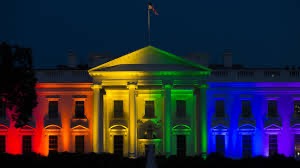The Overton Window is a model used to understand how ideas in society shift over time, influencing both public opinion and political action. The core concept is that politicians are constrained by the range of ideas and policies that are currently acceptable to the general public. Politicians typically only pursue policies that fall within this "window" of acceptability, as these are seen as legitimate, mainstream options. Policies outside the Overton Window may exist, but they are considered too radical or unpopular for politicians to support without risking significant backlash or loss of political support. As societal attitudes change, the window itself shifts, allowing previously unthinkable ideas to become viable policy options.
There are six stages in this political theory:
Unthinkable: Ideas that are considered radical or unacceptable.
Radical: Ideas that are starting to gain attention but are still seen as extreme.
Acceptable: Ideas that have become a topic and are discussed more openly.
Sensible: Ideas that are now seen as reasonable and practical
Popular: Ideas that are widely accepted and become part of public conversation.
Policy: Ideas that have become laws or policies.
An example scenario using the overton window would be the idea of same sex marriage
Unthinkable (1980s): Same-sex marriage was considered unacceptable, and the idea was rarely discussed in mainstream circles.
Radical (1990s): Advocates for LGBTQ+ rights began pushing for marriage equality, though it was still considered a fringe idea by much of the public.
Acceptable (early 2000s): Public discussions about same-sex marriage became more frequent, with support slowly growing, particularly among younger generations and progressive circles.
Sensible (mid-2000s): As more states and countries began recognizing civil unions or same-sex partnerships, the idea of same-sex marriage started to be seen as practical and achievable. More people viewed it as a matter of fairness and equal rights, even if they didn’t yet fully support it.
Popular (early 2010s): The majority of Americans began to support same-sex marriage, and it became a key issue in political debates, with widespread coverage in media and public advocacy.
Policy (2015): The U.S. Supreme Court legalized same-sex marriage nationwide, marking its full acceptance within the Overton Window and its transition into law.
By using the Overton Window theory it allows politicians to refrain going against what society wants.Even though it doesn’t capture every aspect of political dynamics, it highlights a crucial point: politicians are constrained in their policy choices by their electoral prospects. They typically support policies they believe will not jeopardize their chances of winning votes. The range of policy options available to them is influenced by the prevailing ideas, social movements, and collective norms and values within society.
The Overton Window illustrates how ideas that were once considered radical or extreme can gradually shift toward mainstream acceptance through social change, advocacy, and public discussion. This process demonstrates the fluid nature of societal norms and values, allowing us to understand how controversial or fringe ideas can, over time, move from the sides to the center of political and social conversations, eventually shaping policies and cultural norms. Recognizing this dynamic helps us comprehend the evolution of public opinion and the mechanisms that drive changes in societal discourse and governance.





No comments:
Post a Comment